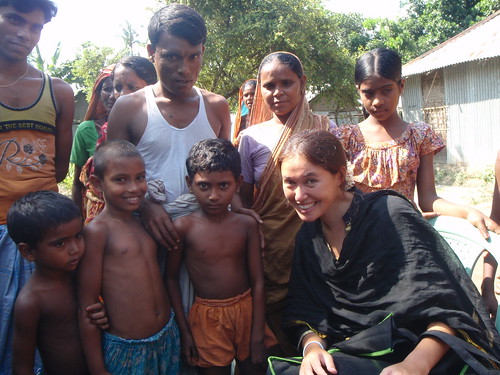Well this was one of my most interesting weekends in Bangladesh. It started off with an invite to a festival known as the Lalon Shah festival in a town west of Dhaka; a musical festival that conjured up images of Sufis, sitars, and dancing barefoot. The two backpackers I met on the nightmarish Biman flight had befriended some members of the more Bohemian art community in Dhaka, and invited me to come along with them. They told me there may be some filming involved, but when I agreed to go, I had no idea what I was actually in stall for. Lights, camera, action – the whole shebang! Somehow I ended up being cast in a film about the legendary Lalon Shah himself, the festival held every year in his honour, and least but not least, a film that will be entered into the Cannes film festival!Briefly, Lalon Shah was a Bangladeshi philosopher who expressed himself through poems, songs and simple instruments. He completely rejected all notions of caste and creed, and lived a simple life in Bangladesh until the late 1890’s. He is credited with being one of the greatest influences for generations of Bangldeshi poets, artists, and musicians, including Rabindranathth Tagore. Tagore is quoted as saying in his Hebart Lecture in London in 1933, that Lalon Shah was a mystic poet who discovered “soul” and the meaning of “man”.
The festival itself is a little Bangladeshi Glastonbury (perhaps that is a bit of an exaggeration) but instead of mainstream pop stars, the musicians here are Bauls, a group of mystic minstrels that were first recorded as being in Bangladesh from the 1500’s. They gather here from all over Bangladesh to sing and play Lalon songs, filled with messages of peace and tranquility.
The film, called, “Ondhonirangom”, or, “The unread”, is about Lalon Shah, the story of his life, his music and his philosophies. It takes place against a broader backdrop of a group of foreigners who travel to the festival by train and learn about this mysterious man. That was where I, along with six other foreigners fit in. Shooting the first day took all day and started at about 6 am when I was picked up by the crew. We all piled on a local train to Kushtia, Khulna Division, on a journey that was to take about 6 hours from Dhaka. We were instructed where to sit, and fed a breakfast of chapattis and egg, while the crew got ready setting up lights, tracks down the aisle for the camera, and white Styrofoam reflectors.
There was much excitement as local travelers sat amongst us and of course stared even more intently than usual. When the train made stops, we would have to “cut” and wait for hawkers to walk through selling peanuts, biscuits and tea, then “action” once more as soon as the train crawled to a start. I had a few lines in the movie and I also have to get up and walk to some Baul minstrels and “pretend to enjoy” by swaying to their music!
Filming continued off the train as the camera men became really creative in order to take shots of us in local “Mossiman” (larger auto rickshaw) transport. There was a lot of stopping, starting, and backtracking, and being piled into this little vehicle in the middle of the hot cloudless day, was becoming quite frustrating. At some points the camera man was dangling off the back of the Mossiman, tied to it by three lungis (cloth saris worn by men), sometimes he was riding behind in a motorcycle, riding in front in a van, and once he even attached his camera to a piece of wood which stuck out in front of the Mossiman!
The crew really looked after us; all meals, hotel and transportation were taken care of. They even paid for me to get back to Bogra straight after the shoot the next day.
In the evening we finally entered the sacred festival grounds where Lalon Shah’s mausoleum is located. It was dark by then, and we were at once surrounded by people and music from all directions. The Baul musicians were in white robes and had either an ektara (instrument with a single string) or a dugdugi (small drum). Filming was challenging here with hundreds of spectators more interested in the “bideshi’s” (foreigners) than what they came for. After being groped more than a few times, I was relieved for the shooting to be over for the day! It is unfortunate sometimes to be a foreign woman in Bangladesh. The music and the musicians were phenomenal and I wished so much I could blend in to enjoy the performance for a while longer.
The following day turned out to be far better for enjoying the musical festivities. In the bright light of day, people left us alone a little more and we were able to fully appreciate the music of the Bauls, and the spirit of Lalon Shah that lives on through them.
